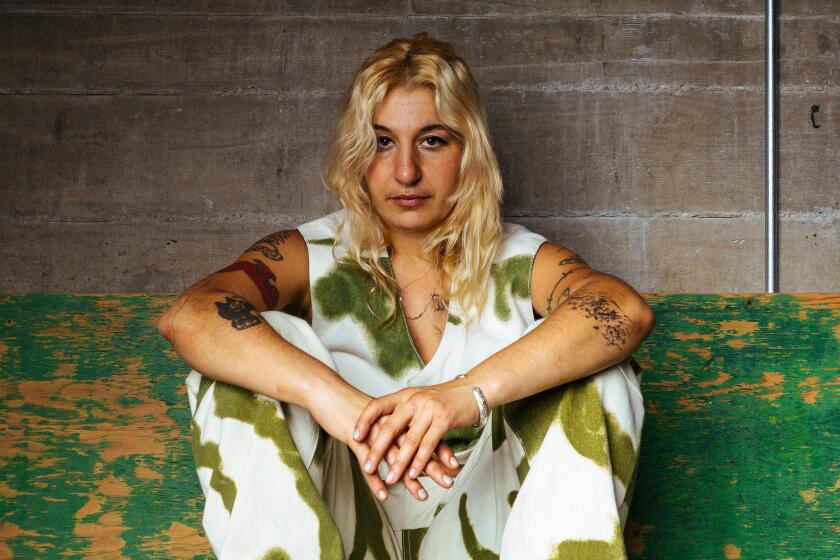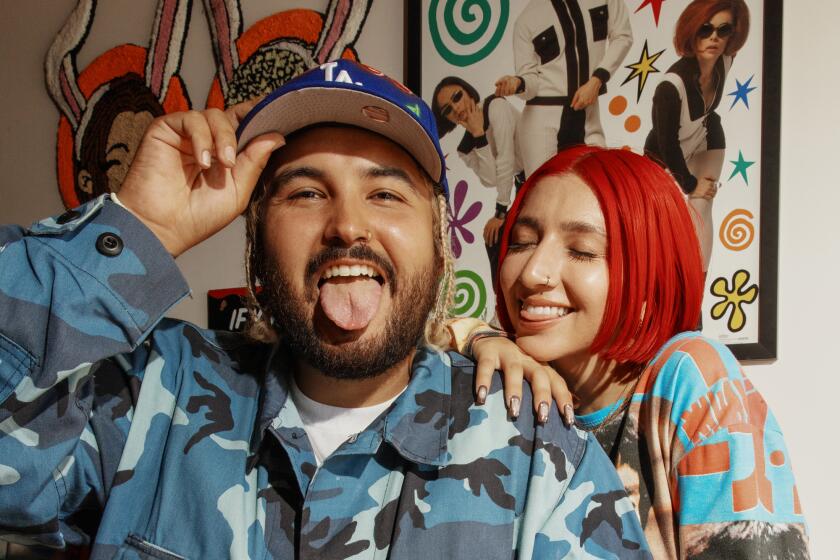- Share via
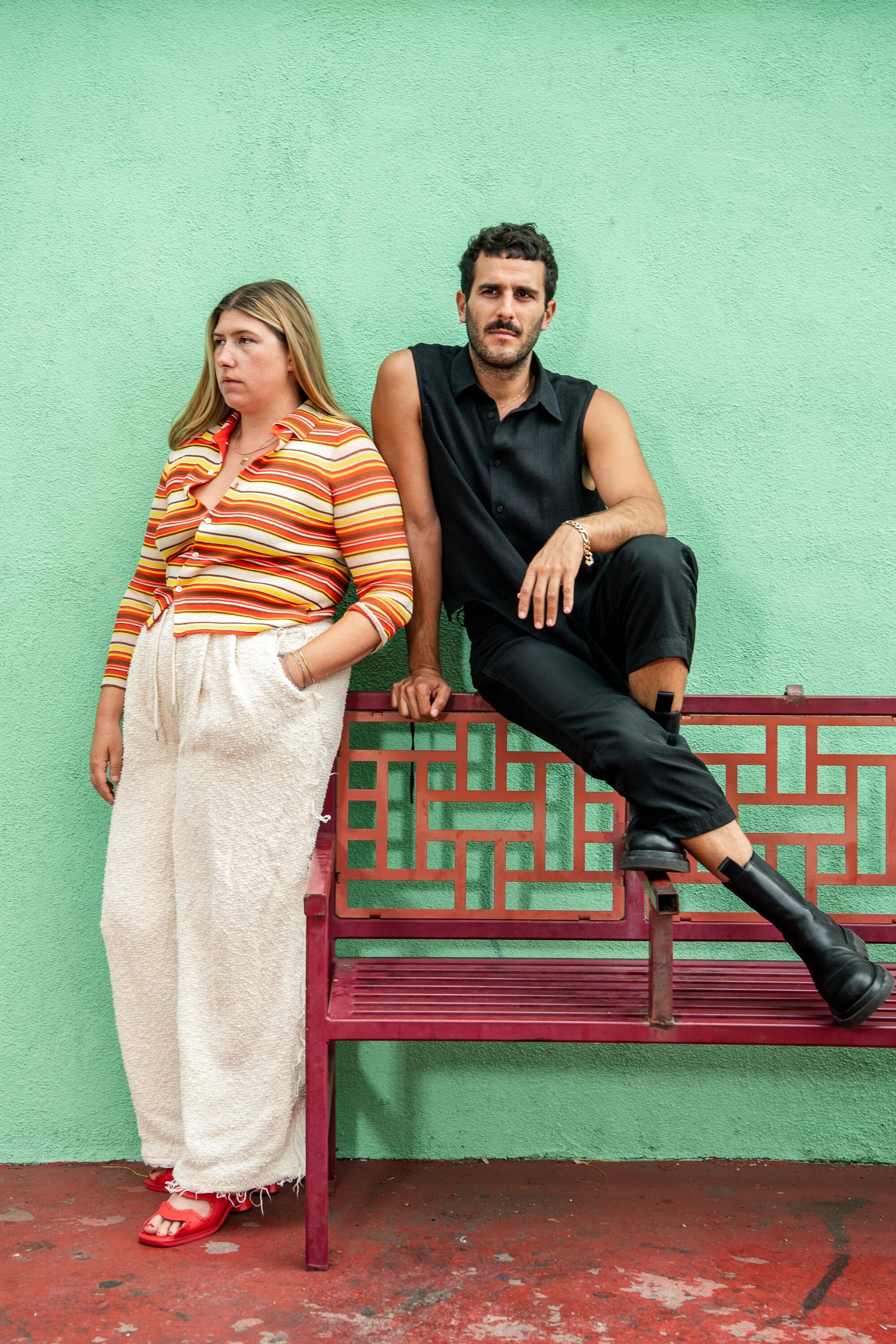
When I show up to Eckhaus Latta’s studio space, attached to the label’s Chinatown store in Los Angeles, I’m shy-waving into a window of a small team that’s hard at work.
It’s 1 p.m. and they’re eating lunch at their computers while completing wholesale orders and all that comes with the crossover of different seasons. Some are dressed in long denim skirts and classic white tank tops, others in vintage floral dresses and chunky platform sandals.
I’m warmly welcomed and seated on a couch that’s covered with a beautifully mended green blanket (the designers recently hosted a darning workshop), next to a variety of cactuses and succulents and a basket full of geometric painted wooden blocks that I imagine little visitors would enjoy. On the wall is a whiteboard that reads “Plants Get Water” — a simple but sweet reminder to take care — along with a gradient of yarn that ranges from red, orange and yellow, to teal, blue, beige and black. Three styles of denim (including a striking shade of silver-infused chartreuse that brings chameleons to mind) are draped over an office chair. Everything feels equally busy and relaxed. Familiar, fun and, in many ways, spectacular. It’s a space that, like everything about Eckhaus Latta, reminds me of my friends. It’s a place where play and close relationships are clearly prioritized.
“That’s foundational to the brand,” says designer and co-founder Zoe Latta when I ask if she’s inspired by her team’s personal taste.
They are where regulars are born, where out-of-towners can find a taste of home, where romantics dream up first dates launching lifelong partnerships — however noisy or filled with distractions the atmosphere becomes, a booth in L.A. remains a sanctuary.
After a full morning of meetings, we’re chatting outside of a tea shop next to the store. Latta’s drink order is brought out to the courtyard: An iced green tea with oat milk that looks more like a slurry of banana medicine and lime juice.
“I love this color,” says her best friend and business partner, Mike Eckhaus.
“Do you want to try it?” asks Latta.
“I love this color,” says Eckhaus, again.
“You can drink this color,” says Latta.
I’m hoping that, courtesy of the pair, I can eventually wear this color.
For several years, Eckhaus Latta has been something to talk about among the smartest and most thoughtful women I know. From dyed denim and mesh tops to knit dresses with unconventional cut-outs and shoes that resemble baseball mitts, to fashion shows where babies and pregnant bellies won the runway, the brand has remained admired and lauded for its extraordinary aura of cool. For clothes with “undertones of kink.” A collaboration with UGG. The book curation inside their retail store. Since its inception over a decade ago, Eckhaus Latta has steered the conversation about fashion with unmatched inventiveness.
“Mike and I have very different styles, and before we were designers, we were kids playing dress up,” says Latta, who met Eckhaus while they were both enrolled at Rhode Island School of Design. They studied textiles and sculpture, respectively. “We have very different sensibilities and the impetus to our friendship started with seeing each other on campus and being like, What the f— is he wearing? And vice versa.”
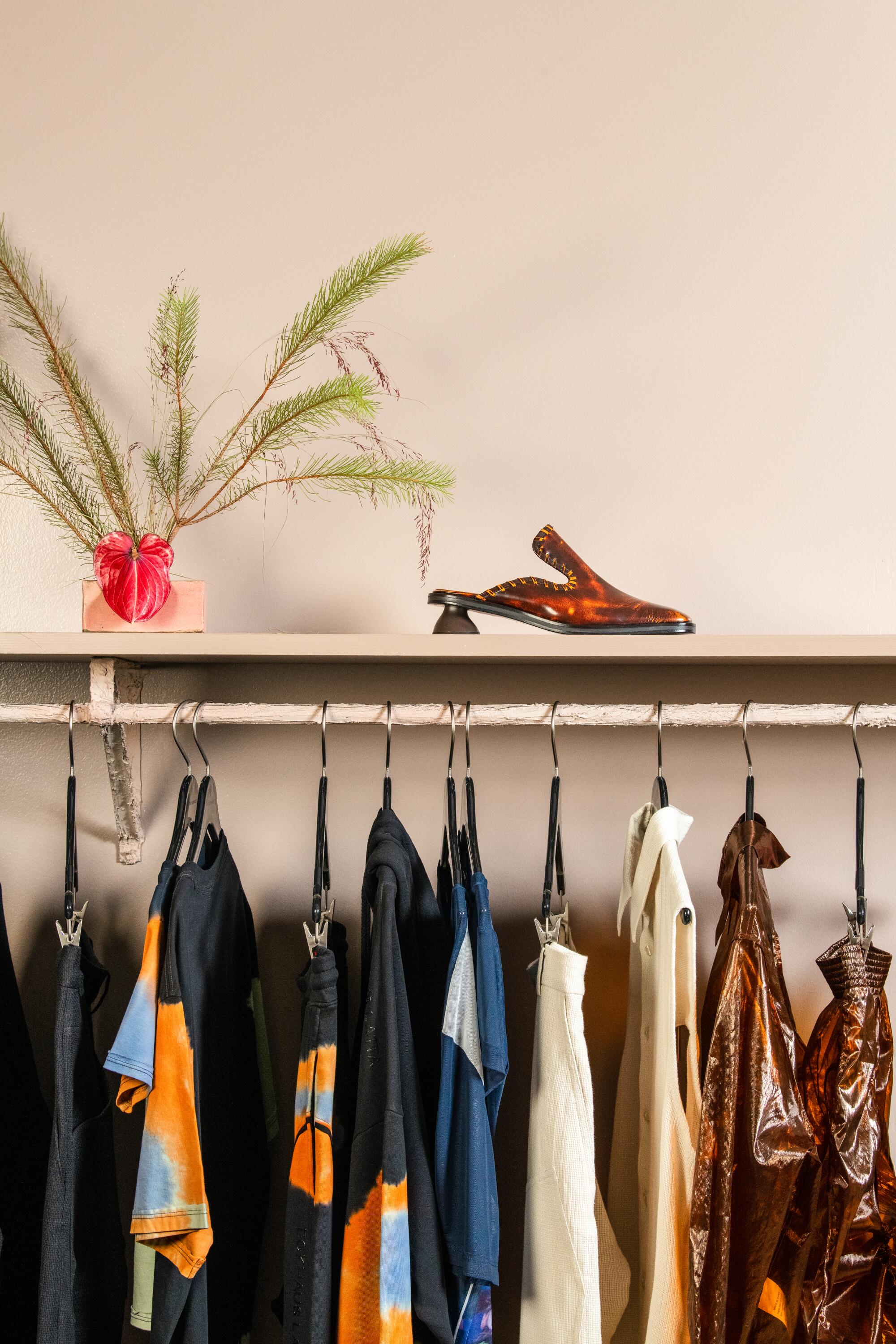
“It’s a subconscious effort,” says Eckhaus, the bicoastal label’s New York-based lead. “We were never searching for inspiration in far-flung places or trying to work with heavy-handed concepts. It vibrates off of the people in our lives, and that speaks to our team and the way that they want to dress, how we want to dress, and how we see our friends dressing and what you feel going around.”
Refreshingly, Eckhaus Latta has never tried to put a finger on any movement in the fashion sphere. They design clothes that are meant to be defined by the wearer, through an approach that’s focused on “extreme openness.” During the label’s early years, much of that was about unisex clothing, and to date, some of their strongest offerings include denim and jersey pieces made for everyone. But what they’re most interested in seems to be continuing to experiment with any given guardrails or limitations in their lives and those of their friends, and to tap into their collective and enduring sense of wonder.
As designers who deeply design clothes, Eckhaus and Latta began working for other places (Marc Jacobs, Opening Ceremony), where they saw more market-driven decision-making processes informing the businesses. What brought them together was the shared idea that someone wanting something is different from them being told they want it. “We still want to respond to things that do well within our collections,” says Latta, “but oftentimes that backfires and it’s not interesting to us or the customer.” Deciding what is or isn’t “good design” is somewhat arcane for the pair, but ultimately, they aim for their work to feel important to someone. “It’s a mood that we inhabit,” says Eckhaus. “Never a singular exploration.”
Whatever the impulse, it always tracks — in the last few years we’ve seen “Sleeping Jackets,” “Toadstool Mules” and “Negative Lace Sweatpants.” In 2021, Latta costumed a crew of goats. The label’s recent prom collection — an off-kilter compilation of skirts, tees and turtlenecks featuring high school sweetheart imagery that can instantly make anyone’s mood infinitely better — was born from found images on EBay.
“We were obsessed with the prom people,” says Eckhaus.
There is no normalcy to the clothing artist Sonya Sombreuil makes. She is moving at her own speed.
Others are enamored now too: Eckhaus tells Latta his date’s mom bought two shirts just the other day. Their clothes have a specific way of making people want to get in on whatever fun they’re having. Almost every look from SS19 was a wearable game of peekaboo. For AW that same year, they worked with visionary makeup artist Isamaya Ffrench, who, inspired by the textural nature of the duo’s designs, airbrushed the softest of paintings on models without regard to facial features, rather focused on color. After debuting their children’s line, which they hoped would become a part of “hand-me-down” culture — ironically or not — shopping for baby clothes became every 30-something’s new favorite hobby.
Their creative practice involves embracing and examining what Latta calls “happy accidents.” Sometimes certain fabrics arrive and they’re nothing like what the duo envisioned. They’re forced to pause, to learn, to adapt, which together seems to be a motivating force. A lot of development takes place in those in-between moments, in which they play varying roles that they’re hesitant to claim.
“Mike is very good at being micro,” Latta explains. She covers “the macro.”
Not quite the case, Eckhaus interjects: “It flip-flops.”
“We change,” Latta confirms.
While pigeonholing has no place in their work, finishing each other’s sentences is a big part of the process.
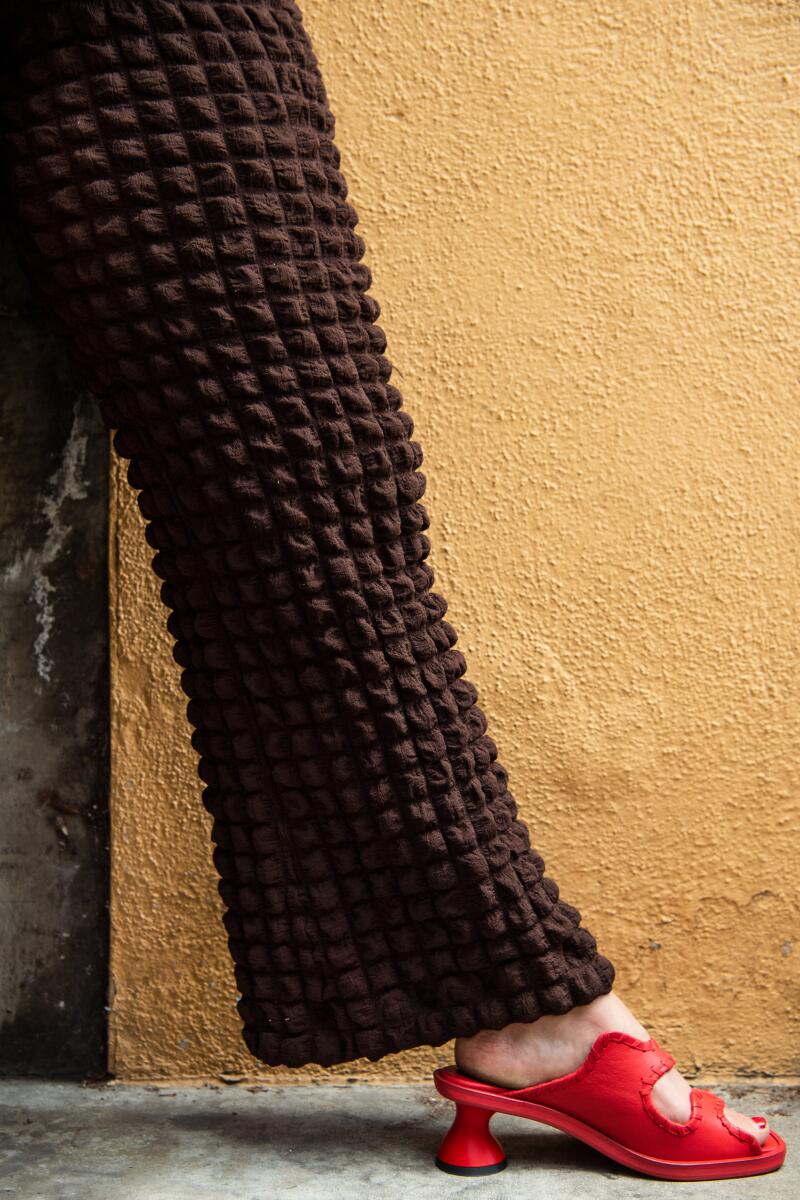

Left: Eckhaus Latta Beach Trousers and Toadstool Sandal in red fleuro. Right: Eckhaus Latta Husk Pants in white; Bottega Veneta boots. (Mariah Tauger / Los Angeles Times)
Eckhaus Latta has long been known and loved for casting friends and non-professional models in their shows. For their FW23 collection, “The White Lotus’” Jon Gries made an appearance on the runway via a reachout from his girlfriend. We’ve seen the likes of Paloma Elsesser, Susan Cianciolo, Hari Nef, Juliana Huxtable and Dev Hynes beaming as brightly as the garments themselves for years — there’s been an incredible cast of characters who are close to Eckhaus and Latta and who they profoundly enjoy working with in that capacity. They’ve developed their own language through collaborating with Rachel Chandler of Midland Agency, which includes likening some of their castings to “just sitting in Times Square.” Latta describes Susan’s walk as “thoughtful.” Paloma’s is “strong and bitchy and confident.” Eckhaus clarifies that more than age, physique or any traditional modeling standards, it’s about how people move through space. It’s about presence.
Their social circles continue to inform their work — friends have a way of guiding instincts and serve as cause for reflection.
“It’s heartwarming and thrilling to see friends that, when we were figuring out what Eckhaus Latta really was … so were they. And now they’re amazing actors, or artists,” says Latta. “The act of growing up with a community feels really nice.”
I’m impressed but not surprised when I ask them if they find it easy to make new friends as grown adults with very busy careers and personal lives.
“Totally! Absolutely,” says Eckhaus.
“And it’s really fun,” says Latta.
They also have a special understanding of dialogue without dialogue — of picking up on the creative endeavors of mutual friends, of people doing interesting work, of artists, photographers and musicians they’d love to connect with in the future. The changes in what others are choosing to explore and pursue push them forward.
In L.A.’s competitive vintage scene, Nick Flanagan and Lex Muro specialize in showing you the right way to take it back.
Eckhaus and Latta view the need to make images as a time to try new things with someone whose work they’ve admired, which has been solidified in editorials and campaigns with Talia Chetrit, Zoë Ghertner, Rob Cusick, and more. After overcoming the devastation of losing their SS23 collection, which is currently sitting somewhere in boxes at a FedEx location — “That happened, that sucked,” says Eckhaus — they’re grateful to have a gorgeous visual archive of the clothes, courtesy of photographer Mary Manning.
Considering the always-overwhelming workload for any independent label, and the everyday challenges of existing in the fashion industry at large, that Eckhaus Latta has stayed standing as one of the most influential is a testament to not only their brilliance, but what they prioritize and view as productive within their practice. Yes, they tried to remake as many of the pieces from SS23 as they could — it was an especially sentimental collection. But they’ve also thoughtfully built a range of beloved, more commercial classics and carryovers — denim and cropped tops that have remained relevant for years, for good reason — that keep the business moving in the right direction. Making clothes is a comprehensive process for the pair.
As much as Eckhaus and Latta are inseparable, they’ve come to find their own identities partially tied up to their brand. “A lot of it lately has been about creating boundaries about how it’s not in my life,” says Eckhaus. After a summer of nonstop work, he’d love to spend less time on the phone (if you’re thinking of calling him, let it not be about work). “You have these lightbulb moments putting your kid in your clothes on the beach,” says Latta. Given the chance to be away from the office, and dreaming of things outside of fashion, the pair is focusing on spending quality time with friends and being with people they care about. Inevitably, that turns up in regenerative ways through their designs — Latta’s still thinking about the Hanes tank top she gave her son while he was all wet, “swaddled in this thing that all of a sudden looked great on him.” Leaving room for those kinds of detours is something the pair is all for.
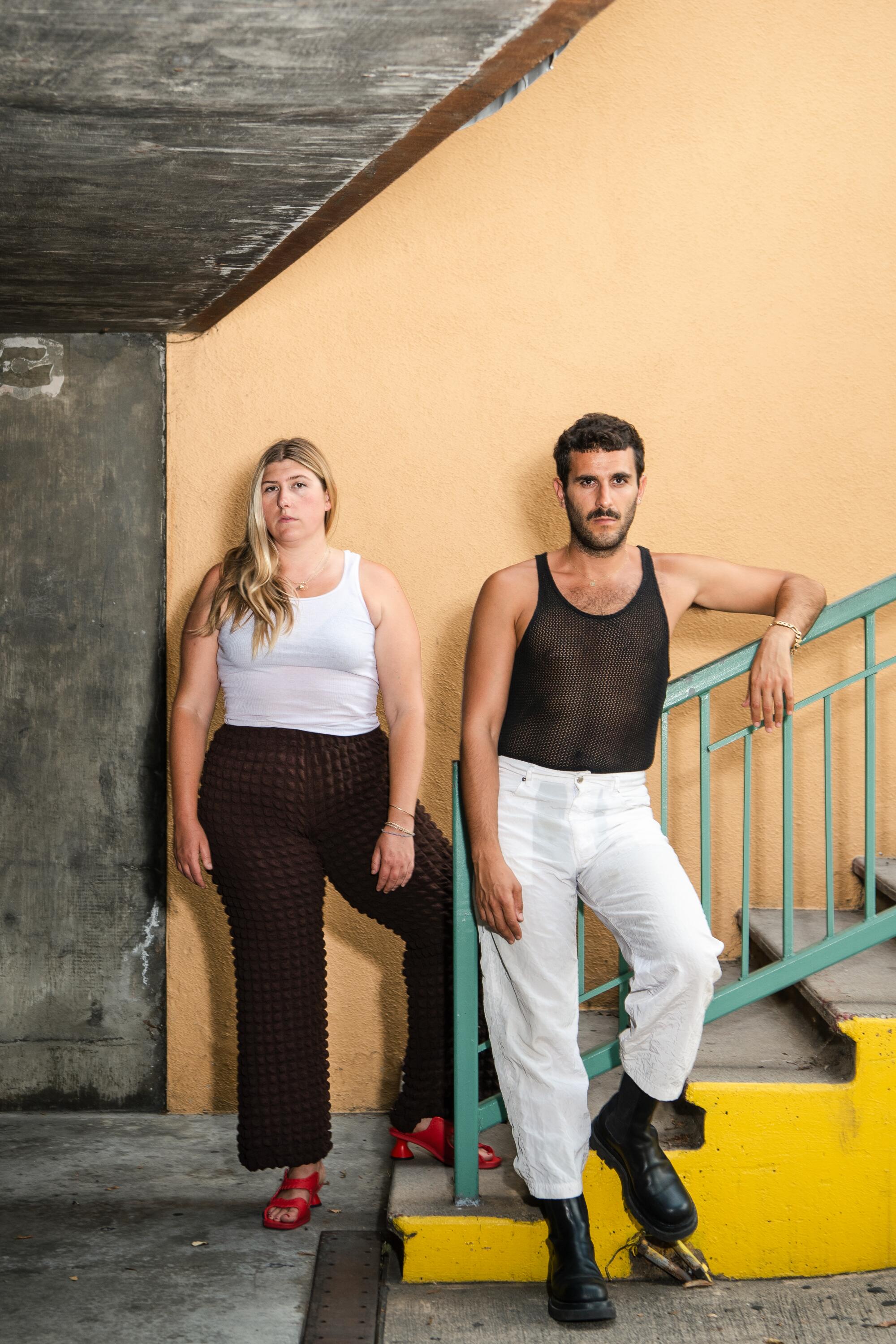
Latta fantasizes about one day being in hospitality. She shares with me what her idea of opening a hotel would look like, and it’s one I’m positive would be breathtaking and fully booked, with all the right details and gestures for guests. But for now, as they gear up for their September show, they can’t speak to exactly what the future has in store.
“The horizon line is changing,” says Latta. “It’ll become something different, in the way that it always has.”
Of course, Eckhaus punctuates her train of thought: “But with more intention.”
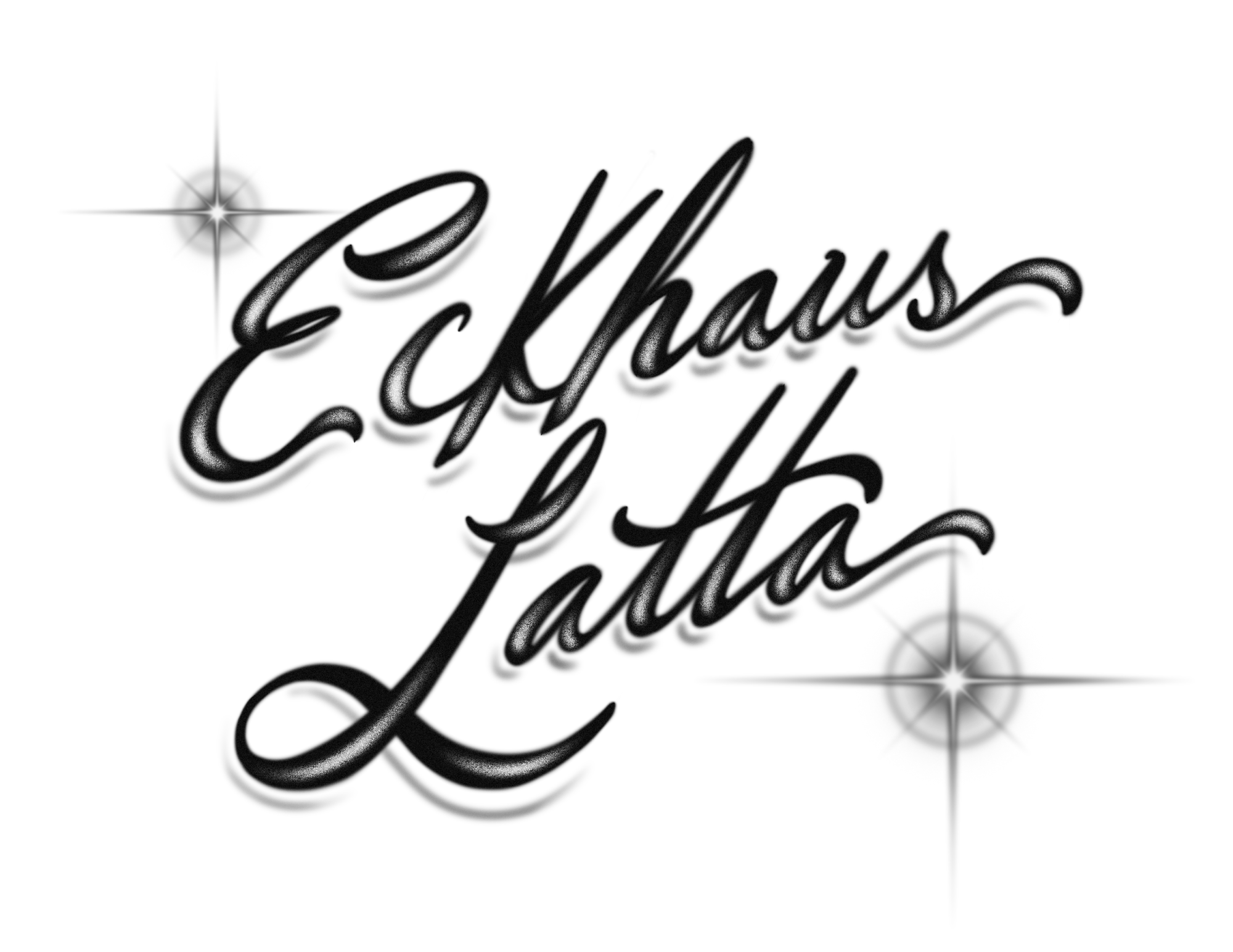
Erika Houle is a writer, editor and culinary student based in Los Angeles. Her work has appeared online and in print at SSENSE, 2001, Editorial Magazine and more.
Lettering by Jake Garcia / For The Times


